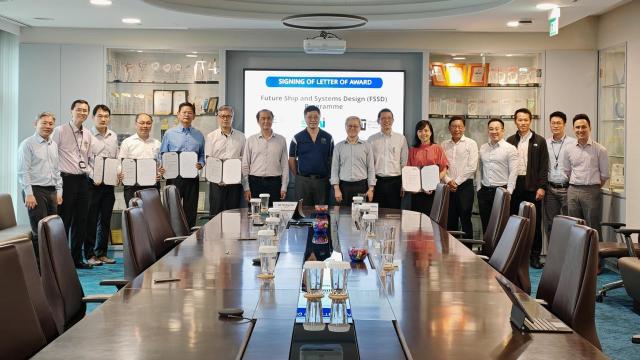In the era of smart tech and automation, a low-tech idea that seeks to benefit developing countries impressed the judges at the recent 13th Biomedical Engineering Society Scientific Meeting.
25-year-old SITizen Isabel Ang Shi Qi, a final-year undergraduate with University of Glasgow for the BEng (Hons) in Mechanical Design Engineering programme, clinched the Silver award for the IES Innovation Challenge for the Community, as well as a Merit award for the Undergraduate Podium for her innovative tilt table for cerebral palsy treatments.
As a machine that assists in the blood circulation of cerebral palsy patients and the improvement of their overall bone density, tilt tables are typically expensive due to electrical and motorized elements. Judges were particularly impressed by Isabel’s tilt table design that fully utilises sustainable resources such as wood and bamboo poles, which are generally found in abundance in developing countries that lack access to electricity.
 Isabel Ang demonstrating how her tilt table prototype works
Isabel Ang demonstrating how her tilt table prototype works
An interdisciplinary collaboration between SIT Engineering and Health and Social Sciences clusters
Through a humanitarian trip to Cambodia, faculty representatives from the Health and Social Sciences and Engineering clusters identified several service opportunities for the university to embark on. One of the initiatives was to offer probable solutions to the challenges faced by a physiotherapy clinic in a remote village.
Due to the lack of funding and access to technological resources, the clinic has not been able to acquire proper therapy devices required for cerebral palsy children to train on, and have been relying on various ingenious alternative ways to assist patients in rehabilitation.
As a result of the close consultation with her Engineering professor, as well as faculty members of the Health and Social Sciences cluster who dispensed valuable expertise on the treatment and care pathways for cerebral palsy patients, Isabel applied her engineering know-how acquired from the course of her studies to the concept and design of the tilt table.
 A key feature of Isabel's tilt table includes the pulley system that acts as a counterweight to prevent the machine from toppling over
A key feature of Isabel's tilt table includes the pulley system that acts as a counterweight to prevent the machine from toppling over
A purposeful, cost-effective solution for developing countries
Isabel’s innovation is a much needed one given that tilt tables in the markets sold for cerebral palsy treatments are generally expensive due to their high-tech nature. Her tilt table infuses the best of engineering methodologies to ensure that the product does not compromise on the therapy required, despite the absence of motorised framework gadgetry.
Crucial to Isabel’s success were the features that were carefully considered to ensure the ease of use, stability and safety of the device, including:
- a rotational crank -in place of a motorised button- that could be easily be operated by physiotherapists;
- an additional set of structure that acts as a safety feature to prevent the main frame from overturning when a patient is placed on it; and
- a pulley system that acts as a counterweight to prevent the machine from toppling over.
 Accepting the award at the Biomedical Engineering Society's 13th Scientific Meeting
Accepting the award at the Biomedical Engineering Society's 13th Scientific Meeting
“Through a personal encounter I previously had with a cerebral palsy child, I saw first-hand how patients struggle with everyday motor skills that we tend to take granted for. I can only imagine the challenges that physiotherapists in developing countries face in acquiring the machines needed to help in cerebral palsy treatments. That motivated me to work on this project, and spurred me on to find a potential solution that is accessible to remote villages in developing countries,” shared Isabel.
“We are currently assessing if Isabel’s prototype can be further refined and potentially replicated for implementation in Cambodia,” Associate Professor Alfred Tan, Programme Director of University of Glasgow’s BEng (Hons) Mechanical Design Engineering programme, said.
Our heartiest congratulations to Isabel for her recent award wins! We wish her and our team of faculty the best in pursuing the implementation of this device to the benefit of developing communities.
![[FA] SIT One SITizen Alumni Initiative_Web banner_1244px x 688px.jpg](/sites/default/files/2024-12/%5BFA%5D%20%20SIT%20One%20SITizen%20Alumni%20Initiative_Web%20banner_1244px%20x%20688px.jpg)


